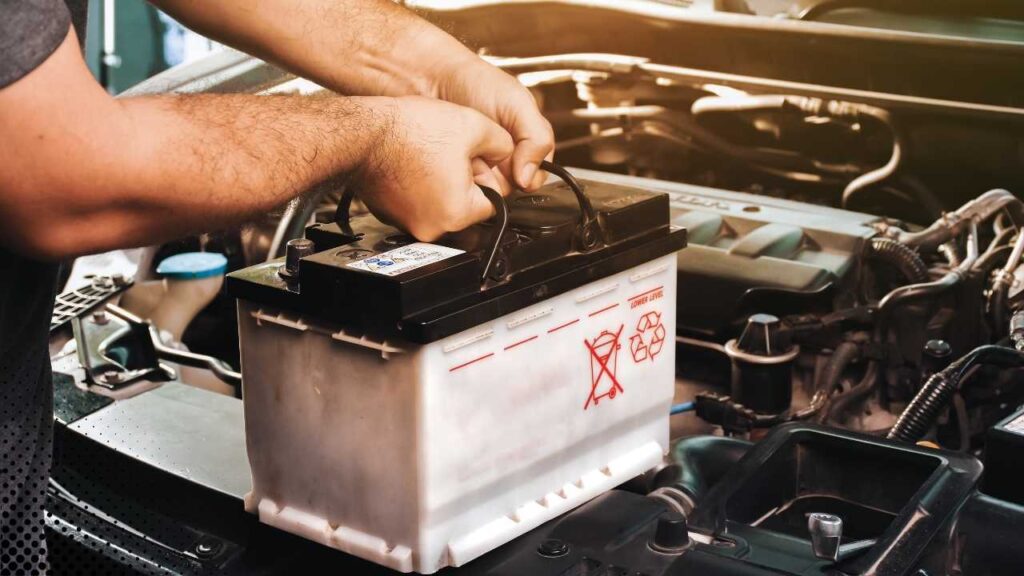A battery maintainer is an invaluable tool for keeping your car’s battery charged and healthy, especially if you don’t drive your vehicle frequently or during long periods of storage. Unlike traditional chargers, maintainers provide a small, steady current to prevent battery discharge without overcharging. Permanently attaching a battery maintainer to your car is a convenient solution that saves time and effort. Here’s a detailed step-by-step guide to help you do it right.
Why Permanently Attach a Battery Maintainer?
A permanent battery maintainer setup eliminates the hassle of repeatedly connecting and disconnecting the device. It’s particularly beneficial for:
- Seasonal Vehicles
Cars used only during specific seasons, like convertibles or classic cars, benefit from a maintainer to ensure the battery remains in peak condition during off-seasons. - Daily Convenience
Permanently installed maintainers make it simple to connect to a power source without removing panels or accessing hard-to-reach battery terminals. - Extended Battery Life
By keeping the battery at an optimal charge level, you can extend its lifespan and reduce the risk of sudden failure.

Selecting the Right Battery Maintainer
Before attaching a maintainer, ensure you have the right device for your car. Consider these factors:
- Voltage Compatibility
Most cars use 12V batteries, so choose a maintainer compatible with this voltage. For other vehicles, like motorcycles or RVs, select a device that matches their requirements. - Amperage Output
A battery maintainer with an output of 0.75 to 1.5 amps is sufficient for most cars. Higher amperage is unnecessary and can lead to overcharging. - Safety Features
Look for maintainers with features like reverse polarity protection, automatic shutoff, and overcharge prevention. - Connection Options
Choose a maintainer with multiple connection options, such as alligator clips, ring terminals, or quick-connect plugs, depending on your preference for a permanent installation.
Tools and Materials Needed
- Battery maintainer
- Ring terminal connectors (usually included with maintainers)
- Zip ties or cable clamps
- Screwdriver or socket wrench
- Electrical tape
- Drill (if necessary for mounting)
- Owner’s manual for your car
Step-by-Step Guide to Permanently Attach a Battery Maintainer
1. Choose an Installation Location
Select a location for the maintainer that is secure, accessible, and protected from the elements. Common locations include:
- Inside the engine bay (near the battery)
- Under the car’s hood
- In the trunk (if your car’s battery is located there)
Ensure there is adequate ventilation around the maintainer to prevent overheating.
2. Disconnect the Car Battery
For safety, disconnect the car battery before starting the installation. Remove the negative terminal first, followed by the positive terminal.
3. Attach the Ring Terminals
Most battery maintainers come with ring terminal connectors designed for permanent installation. Follow these steps:
- Attach the red ring terminal to the positive (+) battery post.
- Attach the black ring terminal to the negative (-) battery post.
- Ensure the connections are secure and the terminals are tightened properly.
4. Route the Maintainer Cable
Carefully route the cable from the battery to the maintainer’s location. Avoid sharp edges, moving parts, or areas that generate excessive heat. Use zip ties or cable clamps to secure the cable in place and prevent it from shifting during driving.
5. Mount the Maintainer
Mount the battery maintainer securely in the chosen location. If the device has mounting holes, use screws or bolts to fasten it. Alternatively, use heavy-duty adhesive or Velcro straps for a non-permanent mounting solution.
6. Connect the Maintainer to a Power Source
The maintainer will need access to an electrical outlet for charging. For convenience, position the charging plug in an easily accessible location, such as near the car’s grille or under the bumper. You can also use an extension cord rated for outdoor use if the car is parked far from an outlet.
7. Test the System
Reconnect the car battery, starting with the positive terminal followed by the negative terminal. Plug in the battery maintainer and verify that it is functioning correctly. Most maintainers have indicator lights to show when the battery is charging or fully charged.
Safety Tips
- Double-Check Polarity: Always ensure the positive and negative connections are correct to avoid damaging the battery or maintainer.
- Inspect Regularly: Periodically inspect the cables and connections for wear or damage, especially if the car is used frequently.
- Avoid Overloading Circuits: If using an extension cord, ensure it is rated for the power draw of the maintainer and does not overload the outlet.
- Protect the Connections: Use electrical tape or protective covers on exposed connections to prevent corrosion and accidental shorts.
Troubleshooting Common Issues
- Maintainer Not Charging: Check the outlet, ensure the connections are secure, and verify that the maintainer is compatible with your battery.
- Overheating: Ensure the maintainer is installed in a well-ventilated area. If it overheats frequently, consider replacing it with a higher-quality unit.
- Battery Still Draining: If the battery continues to drain, test it for internal issues or have your car’s electrical system inspected for parasitic drains.
Benefits of a Permanent Battery Maintainer
- Convenience: No need to manually connect and disconnect the maintainer every time.
- Battery Health: Maintains a consistent charge level, reducing the risk of sulfation and extending battery life.
- Peace of Mind: Ensures your vehicle is ready to start even after long periods of inactivity.
- Cost Savings: Prevents the need for frequent battery replacements due to deep discharge or neglect.
Permanently attaching a battery maintainer to your car is a practical solution for ensuring your battery remains charged and healthy. By following this guide, you can install a maintainer safely and effectively, providing a reliable power source for your vehicle during periods of low use or storage.
With the right tools, a proper maintainer, and attention to detail, you can enjoy the benefits of a well-maintained battery, reduced hassle, and enhanced vehicle reliability.



